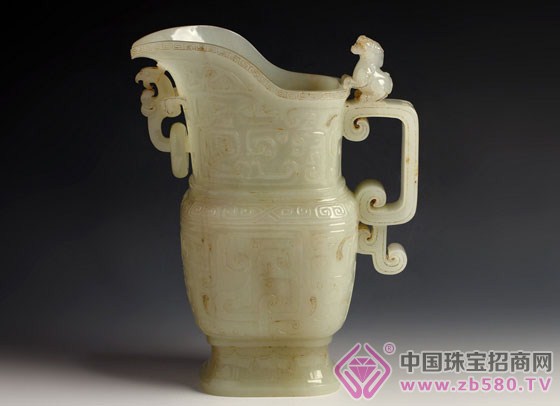In the early days of making jade, the Qidan people all imitated the production style of the Han people. China Jewelry Merchants Network explained that Qidan jade wares are divided into several categories.

The first type is the traditional styles of dragons, phoenixes, plates, bowls, etc., which are used by the Han people. The Khitan people have a strong sense of identity with the Chinese nation. They think that they are not "foreigners" and they are also descendants of the Yellow Emperor. The rituals and the like are basically the same as the tradition, but the jade used for the sacrifices is very different from the tradition. For example, the traditional waist is usually copper gold, while the Qidan unearthed is the jade waist, only this one, unearthed in the tomb of the Qidan royal girl. There are also shackles used by Buddhists to hang. The shackles unearthed by Khitan are different from ordinary cockroaches. There are some things like tubules in the middle of the pendant. For example, the small pendants of Ssangyong, Shuangfeng and Shuangmao are unique to Khitan. Sitting on a dragon is a simulation of the traditional objects of the Han Chinese.
The second category is grassland ecological modeling (birds, beasts, fishing and hunting). These are all related to the life of the nation, and they are very unique. For example, jade "cross-necked", this is a typical Qidan culture, in addition to jade and amber, and even found bronze. Fish-shaped pendants and bear-shaped pendants, the fish looks very fat, the bears look fat, but they are relatively rigid and simple, which shows the simple pursuit of the Liao Dynasty.
The third category, the Buddhist theme. Buddhism flourished in the Liao Dynasty. As is known to all, the Buddhism of the Northern Wei Dynasty flourished, and then it was the Tang Dynasty. However, from the unearthed cultural relics, the Buddhism of the Liao Dynasty was unmatched by other dynasties. During the period of Yelu Abao, the first temple in the Liao Dynasty was established. During the period of Liao Shengzong and Liao Jingzong, the belief in Buddhism was out of control. According to the records at the time, the population of the Liao Dynasty was more than 10 million, of which the monks accounted for 3.6%. Before the Northern Song Dynasty, when the monk population reached 0.92%, the state finances had been difficult to bear, thus illustrating the worship of Buddhism by the Liao Dynasty. Every year, the Emperor Empress also gives land to the monks' temples. Only the monks will spend 300,000 yuan on gold. For example, Feitian, the Liao Dynasty was the first to be found unearthed. At present, five land points have been discovered. For another example, what I said before.
The fourth category, horse shape. "Khitan saddle vest world." A set of horses, decorated with 300 Hetian jade. A large number of agate jade harnesses were found in the tomb of Hummer. Later, one or two objects decorated with agate or jade will be found on the harness of the Central Plains, but this set of jade harnesses is only available to the Khitan people. The fifth category, the Hu style, is the "foreigner" style. This is a large proportion of the Qidan jade styling and is unique to the Qidan. For example, "Huren lion-printed amber pieces" is a typical Qidan shape. In addition, there are also round sculptures and sculptures. The biggest feature of the Liao Dynasty jade carvings is the presence of pairs. The greatest feature of the Liao Dynasty jade is the symbol of rank and identity.
Polyester Oxford,Polyester Oxford Fabric,Recycled Polyester Oxford,Polyester Oxford Cloth
Suzhou Jinnan Textile Technology Co., LTD , https://www.jinnantextile.com